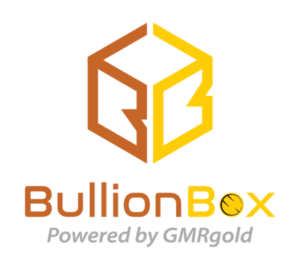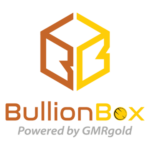Finding the cheapest ways to buy gold isn’t always simple. Prices change daily, and dealer markups, premiums, and hidden fees can make affordable gold harder to spot than it looks. Yet smart investors know there are practical ways to buy gold safely and cost-effectively without sacrificing quality or security.
Whether you’re comparing bars and coins or exploring ETFs and subscription services, understanding what actually drives gold’s price is what saves you the most. Smart investing begins with clarity, and this guide breaks down how to maximize your return on investment while building genuine, long-term wealth in gold.
8 Cheapest Ways to Buy Gold for Less
Finding the cheapest way to buy gold isn’t about chasing the lowest spot price. It’s about using smart strategies that lower your average cost over time. The best investors combine patience, consistency, and awareness of premiums to build value without overspending.
Here are the most effective approaches.
1. Understand the True Costs
Before hunting for the cheapest gold, it helps to know what you’re actually paying for. A lot of new buyers think the gold market runs like a stock exchange—just buy at the spot price, and you’re done. In reality, several layers of cost affect your final price per ounce.
Spot Price vs. Premium
The spot price is the live market rate of one troy ounce of gold. The premium is everything added on top, like minting, distribution, and dealer profit. For example, if gold trades at $2,300/oz and your dealer charges a 6% premium, you’ll pay about $2,438.
Premiums vary depending on the product type, market conditions, and demand. Coins often cost slightly more because they’re government-minted and widely recognized, while bars usually carry lower premiums but can be harder to resell in small quantities.
Hidden Costs: Storage, Shipping, and Insurance
Even after purchase, costs can sneak in. Physical gold must be stored safely in a home safe, a private vault, or a bank deposit box. Add insurance and shipping, and your “cheap” deal can quietly turn expensive.
Dealer Markups and Minimum Purchases
Traditional gold dealers often set higher minimums or push bulk buys to justify discounts. Some also add handling or credit card fees that inflate your per-ounce cost. Subscription services or trusted online platforms usually skip those extras, offering smaller, more manageable entry points.
Cost Comparison at a Glance
| Cost Factor | Physical Gold | ETFs / Digital Gold | Subscription (BullionBox) |
| Upfront Premium | 3–10% | 0–1% fund fees | Included in subscription pricing |
| Storage | Self-managed | Custodian-based | None required |
| Liquidity | Sell physically | Easy online trading | Moderate, collector focus |
| Ownership | Tangible | Paper claim only | Tangible |
| Minimum Investment | Often $1,000+ | As low as $50 | From $99/month |
“Low price” isn’t always “low cost.” Physical gold can be more expensive upfront, but you own the real asset. ETFs may look cheaper, but management and custodian fees reduce returns over time.
2. Consider Bullions Instead of Coins
When you’re buying gold purely as an investment, bullion bars and rounds often give you the best price per ounce. Bars skip the collectible value and design markups of coins, which makes them cheaper overall.
Coins are still valuable for liquidity, especially government-minted ones like the American Eagle or Canadian Maple Leaf, but if your goal is to get as much gold weight as possible, bars are usually the smarter pick.
3. Avoid Markups
Gold markups don’t stop at the premium. Many traditional dealers charge additional handling fees, processing charges, or minimum order requirements that can quietly raise your per-ounce price.
Smart buyers always check the “all-in” cost, which means the total after premiums, payment method fees, and shipping. Subscription programs consolidate everything into a single monthly payment, making it easier to stay on budget.
4. Avoid Rare Coins
If your goal is affordability, skip rare or proof coins that carry high premiums for limited designs or mint marks. Those are great for collectors but inefficient for cost-focused buyers. Focus on simple bullion bars or rounds that reflect gold’s base value most closely.
5. Use Subscription Services
Gold subscription services make buying affordable gold effortless. You get professional curation, high-quality pieces, and variety across global mints. Because products are purchased and distributed in bulk, subscription clients benefit from economies of scale, which grants access to better pricing than most retail buyers could get alone.
6. Compare Dealers and Their Offers
Even among trusted sellers, pricing structures differ, and small differences can add up quickly. Some include shipping, others charge extra for credit card payments or insurance. The best way to evaluate dealers is to look at the total, all-in cost per ounce rather than just the listed spot premium.
When comparing offers, consider:
- Premiums and Fees: Some dealers list low base prices but hide handling or credit-card fees at checkout. Always review the full invoice before paying.
- Shipping Costs: Many online sellers charge separate shipping and insurance fees. A “free shipping” label might simply mean the cost is rolled into the premium.
- Taxes: Depending on your location, local or state sales tax may apply to precious-metal purchases. Some states offer exemptions above certain purchase thresholds.
- Payment Method Discounts: Bank transfers or wire payments usually come with better pricing than credit cards, which often add 2–3%.
- Brand Authority: Established, reputable dealers tend to charge slightly higher premiums but provide guaranteed authenticity, certification, and smoother resale options.
- Return and Buy-Back Policies: A good dealer should clearly state whether they buy back gold, at what rate, and under what conditions.
7. Buy Fractional Gold
Fractional bars or coins (½ oz, ¼ oz, 1/10 oz, or smaller) are great entry points for new investors. While the per-ounce cost is slightly higher, fractional gold offers flexibility and liquidity. You can sell smaller portions later without having to liquidate a full ounce at once.
8. Buy in a Small and Consistent Manner
Instead of saving up to buy in bulk once a year, try buying smaller amounts regularly. This method, known as Dollar-Cost Averaging (DCA), smooths out price volatility. Some months you’ll buy when prices dip, other months when they rise slightly, but your long-term average evens out favorably.
Our subscription tiers follow this exact principle. You invest a set amount each month and receive expertly curated gold, silver, or other metals delivered to your door. It’s affordable, predictable, and stress-free.
Cheapest Physical Gold Options
When you’re looking for the cheapest way to buy gold, physical bullion remains one of the best long-term choices. You get a real, tangible asset that holds value across generations. The key is knowing which type of gold gives you the most metal for your money.
Gold Options Ranked by Cost per Ounce
| Type | Typical Premium Range | Pros | Cons |
| 1 oz Gold Bars | 2–5% | Lowest premium per ounce, easy to stack or store | Harder to sell in small portions |
| Fractional Bars (½ oz, ¼ oz) | 5–10% | Lower entry cost, flexible resale | Higher markup per ounce |
| Sovereign Coins (e.g., Maple Leaf, Krugerrand) | 5–8% | Globally recognized, easy to verify | Slightly pricier than bars |
| Private Mint Rounds | 4–6% | Affordable, wide variety of designs | Lower resale demand than government coins |
| Commemorative or Proof Coins | 10%+ | Collectible appeal, craftsmanship | Not ideal for cost efficiency |
Bars are cheapest per ounce because they skip the collectible value factor. For investors focused purely on weight, 1-ounce bars usually deliver the best price.
Fractional bars and coins are perfect for beginners who want to start small. Even if the per-ounce cost is slightly higher, the lower total price makes them accessible.
Government-minted coins like the American Eagle or Canadian Maple Leaf are widely accepted and retain strong resale value, even with a modest premium.
Rounds are a smart middle ground. They’re affordable and beautiful, though they don’t carry the same recognition as official coins.
Commemorative or proof coins can look appealing, but are often marketed at steep markups. If your goal is cheap accumulation, they’re not the way to go.
Our Approach
BullionBox curates a mix of bars, coins, and rounds each month, balancing affordability with long-term value. You’ll receive high-quality, government-backed, and private mint pieces selected by experts who monitor market premiums daily. That means you’re not just chasing the cheapest product, you’re getting maximum value per dollar with professional oversight and zero hidden fees.
Hidden Risks to Avoid While Buying
It’s easy to assume the best deal is the lowest sticker price, but that approach often backfires. The true cost of gold goes beyond what you pay upfront. What matters just as much is authenticity, liquidity, and long-term value.
The Hidden Risks of Bargain Hunting
Cheaper listings from unverified dealers can mean gold-plated products, counterfeit coins, or bars with questionable purity. Even small differences in fineness can reduce value by hundreds of dollars over time. Many buyers learn this the hard way when they try to resell and discover their “discount gold” isn’t what they expected.
Gold is one of the most counterfeited commodities in the world. That’s why reputable sources, transparent pricing, and certification matter more than saving a few percentage points on the front end.
Why Quality and Verification Save Money in the Long Run
Working with established suppliers ensures the gold you buy holds its value when you eventually decide to sell or trade. Premiums on verified, government-minted coins might seem higher, but those pieces retain global recognition and can be liquidated quickly without heavy markdowns.
FAQs: Buying Gold Affordably
1. Is it cheaper to buy gold online or from a local dealer?
Online dealers usually offer slightly lower prices because they have fewer overhead costs and access to a larger inventory. You’ll also find clearer spot-based pricing and frequent promotions. Local dealers, however, allow you to inspect products in person and avoid shipping fees or delivery delays. The best approach is to compare both options and calculate the total cost after premiums, taxes, and potential shipping.
2. Does timing matter when buying gold?
Gold prices move daily, but trying to time the market rarely pays off. Short-term price swings are unpredictable, and waiting for the “perfect” moment can mean missing steady opportunities. A better approach is buying consistently over time, which helps balance out highs and lows naturally.
3. Is secondhand or pre-owned gold a cheaper option?
Sometimes, yes. Pre-owned gold from verified dealers or pawn shops can cost slightly less than brand-new bullion, especially if it comes without original packaging. However, secondhand gold should always include verification of weight and purity, such as an assay test or certification. Avoid private listings or online auctions that don’t guarantee authenticity.
4. What purity level should I look for when buying gold cheaply?
Investment-grade gold is typically .999 or .9999 fine, meaning it contains 99.9% or more pure gold. Lower purities, like 14K or 18K jewelry, contain more alloy metals and are priced accordingly, but they’re less efficient for investment purposes. For cost-effective investing, stick to high-purity bars or coins from recognized mints.
5. Is buying gold during economic downturns cheaper or riskier?
Gold prices often rise during economic uncertainty because investors treat it as a haven. That means it’s rarely “cheaper” in downturns. The better strategy is to accumulate steadily before market volatility hits, so you’re not buying at peak demand when premiums are higher.
6. How can I verify I’m getting real gold when buying cheaply?
Only buy from reputable, established dealers or certified platforms. Look for gold with assay cards, serial numbers, and mint certificates. If you’re buying pre-owned items, request an independent test or appraisal. Avoid any seller who can’t provide clear proof of authenticity or refuses to disclose purity details.
Sum Up
Finding the cheapest way to buy gold isn’t about chasing discounts or waiting for the perfect market dip. It’s about understanding how costs work, choosing reputable sources, and building your holdings consistently.
The lowest price per ounce only matters if the gold is real, verified, and easy to resell later. That’s why focusing on authenticity, trust, and steady accumulation always wins over one-time “bargain” purchases.
Start small, compare options, and think long term. Gold’s true strength isn’t in short-term gains but in how it preserves wealth across uncertain times. Whether you prefer bars, coins, or curated collections, the key is staying informed and buying with confidence.





